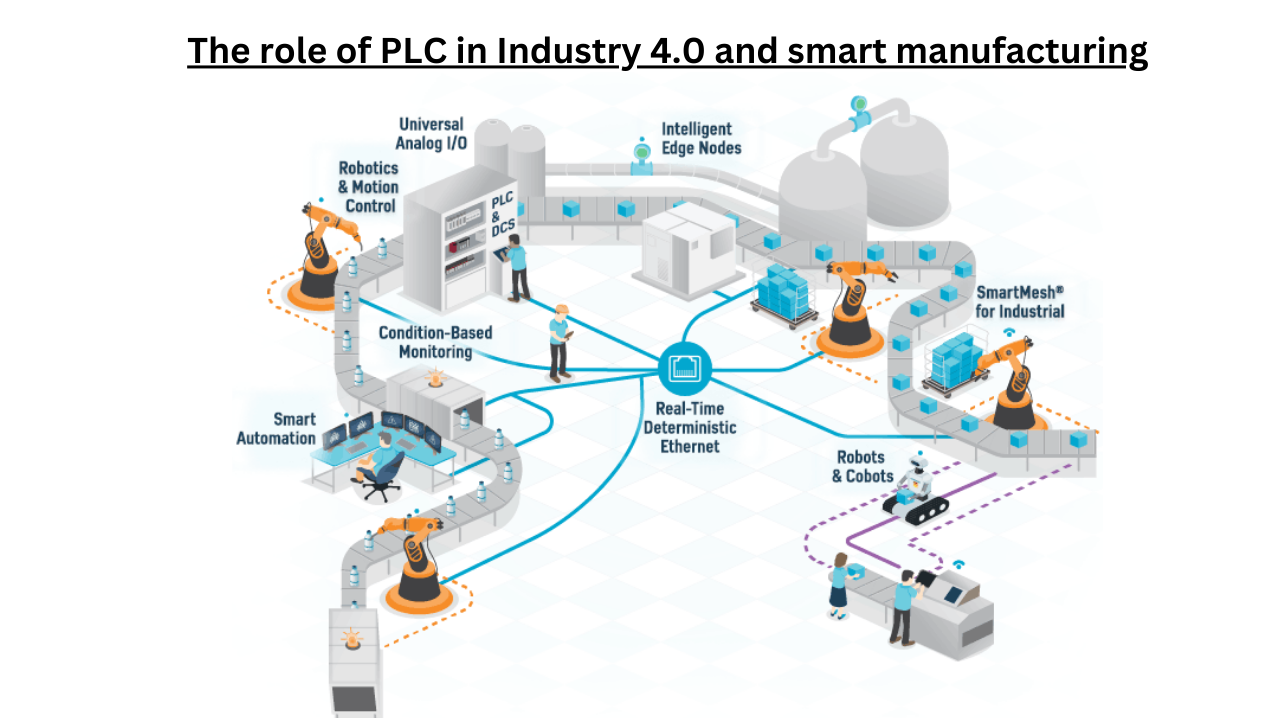PLCs are essential to Industry 4.0 and smart production because they help companies automate better, run more efficiently, and generate higher-quality goods. Here are some examples of how PLCs are utilised in smart manufacturing and Industry 4.0:
Data collection and analysis:
Modern manufacturing relies heavily on data gathering and analysis, which enables businesses to streamline operations, save downtime, and enhance product quality. PLCs are used to monitor and operate equipment on the factory floor, gather data from various sensors, and communicate this data to cloud-based systems for analysis. As a result, they play a critical role in data collecting and analysis.
Allen Bradley PLCs are capable of gathering data on a variety of variables, including as temperature, pressure, speed, and vibration. Typically, this data is sent to cloud-based systems where it may be examined with data analytics software to spot trends, patterns, and abnormalities. Then, by using this analysis, manufacturing processes may be made more efficient, flaws can be found, and downtime and waste can be decreased.
PLCs can be fitted with a variety of communication interfaces, such as Ethernet or Wi-Fi, that allow them to send data to cloud-based systems in real-time, facilitating data gathering and analysis. Modern PLCs also frequently include strong processors and memory, which enable them to manage massive quantities of data and carry out difficult computations.
Predictive maintenance:
In order to schedule maintenance in advance, predictive maintenance is a form of maintenance approach that employs data analysis techniques to forecast when a machine or other piece of equipment is likely to fail. Predictive maintenance aims to decrease equipment downtime, lower repair expenses, and increase equipment longevity.
PLCs are essential to predictive maintenance because they are used to collect data from numerous sensors, including temperature, pressure, vibration, and current, and monitor equipment performance in real-time. Usually, this data is sent to cloud-based systems so that machine learning algorithms may analyse it and look for trends and abnormalities.
Based on this study, predictive maintenance systems can forecast when a piece of machinery or equipment will break down and send messages or alerts to the maintenance team. This makes it possible to plan maintenance in advance so that fixes may be made before a failure happens.
Remote monitoring and control:
The capacity to monitor and operate industrial processes and equipment from a distance, frequently utilising a web-based interface or mobile application, is referred to as remote monitoring and control. As they are used to gather data from sensors and manage equipment on the manufacturing floor, PLCs are essential for providing remote monitoring and control.
PLCs make it feasible for operators and managers to remotely monitor and control production processes, allowing for speedy problem resolution from any location with an internet connection. This can boost production, decrease downtime, and improve operational efficiency.
Additionally, remote monitoring and control help businesses manage distant production systems more effectively and require less on-site staff. The requirement for travel and on-site staff can be reduced, for instance, by an operator in one area being able to remotely monitor and manage production operations in another location.
Check: Rockwell Automation 1766-L32BXB MicroLogix 1400 PLC
Collaborative robots:
Cobots, often referred to as collaborative robots, are a type of industrial robot created to cooperate with people in a shared office. Cobots are industrial robots that are safe and adaptable enough to operate alongside people, unlike standard industrial robots that are normally housed in cages or protective enclosures.
Collaborative robots are made possible by PLCs, which are used to direct and coordinate the motions of the robot’s numerous parts, including its arms, grippers, and sensors. The robot’s motions and interactions with its surroundings may be programmed using PLCs, enabling it to carry out a variety of activities alongside human personnel.
In manufacturing and assembly processes, collaborative robots are frequently employed to carry out activities including pick-and-place operations, material handling, and quality checking. Cobots can assist to raise production by collaborating with human employees to increase efficiency and decrease mistake rates.
The flexibility and adaptability of collaborative robots is one of their main advantages. Cobots may be quickly reprogrammed and reconfigured for multiple jobs and applications, unlike typical industrial robots, which are frequently created for particular tasks or processes. They are thus a practical and affordable choice for a variety of production applications.
Read: CAN ARTIFICIAL LIGHT REPLACE SUNLIGHT FOR PLANTS?
Cybersecurity:
In the context of industrial automation, cybersecurity refers to the defence of industrial control systems (ICS) and the networks that connect to them against cyberthreats such hacking, malware, and cyberespionage.
Industrial control systems’ cybersecurity is crucially dependent on PLCs. Since PLCs are frequently the main controllers of industrial machinery and processes, any weaknesses in their hardware or software might have serious ramifications for system security.
PLCs are often built with built-in security mechanisms, such encryption and authentication procedures, to defend against cyber attacks and prevent unauthorised access to the system. To further improve their security, PLCs may be linked to firewalls and other security tools.
Companies may apply a variety of recommended practises to improve the cybersecurity of their PLC systems in addition to these built-in security measures. These can include putting in place access restrictions to limit who has access to the PLC system, upgrading the PLC firmware often to fix known bugs, and keeping an eye out for any indications of suspicious activity.
PLCs enable firms to boost automation, optimise production processes, and raise the calibre of items produced, making them crucial parts of Industry 4.0 and smart manufacturing.




